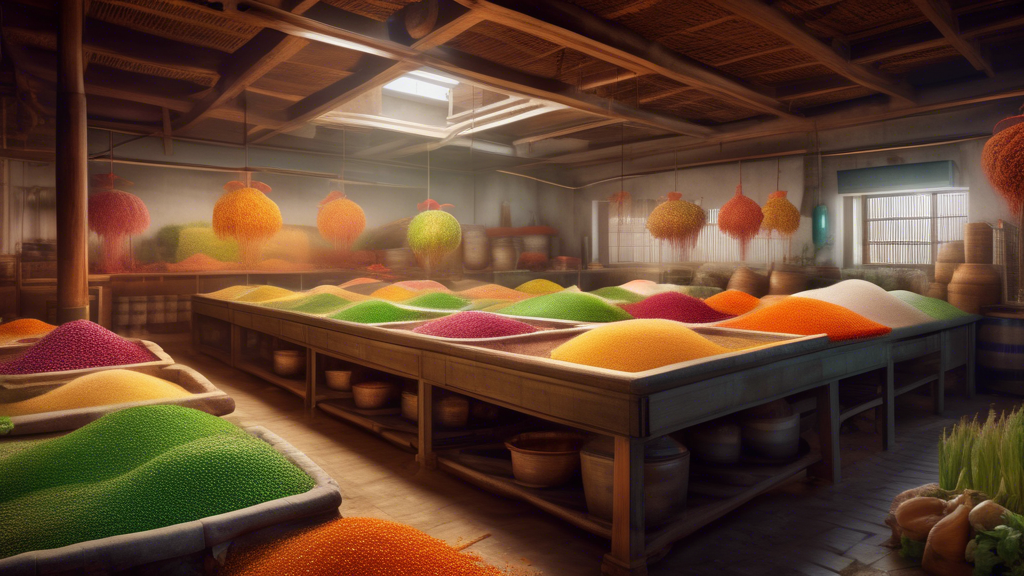Organic acids influenced the microbiota succession, thereby modifying the flavor quality of Laotan Suancai throughout

The Impact of Organic Acids on the Microbiota Succession and Flavor Quality of Laotan Suancai
Laotan Suancai, a traditional fermented vegetable dish popular in Chinese cuisine, is renowned for its unique pungency and depth of flavor, which are developed through a complex fermentation process. Recent studies have highlighted the pivotal role of organic acids in this process, notably how they influence the microbiota succession that in turn affects the overall flavor quality of Laotan Suancai.
Understanding the Role of Organic Acids in Fermentation
Organic acids, predominantly lactic acid, are produced during the fermentation of Laotan Suancai, which not only helps in preserving the vegetable but also influences the microbial community responsible for its fermentation. These acids are a by-product of the anaerobic metabolism of bacteria that thrive in the fermentation environment, primarily lactic acid bacteria (LAB).
The presence of these organic acids in the fermentation medium lowers the pH, creating an acidic environment that is conducive to the growth of beneficial bacteria while inhibiting the proliferation of harmful ones. This selective pressure ensures that only certain microbes, which are capable of contributing positively to the flavor and safety of Laotan Suancai, dominate the ecosystem.
Microbiota Succession During Fermentation
The microbiota of Laotan Suancai undergoes significant changes during its fermentation cycle. Initial stages are generally dominated by various enterobacteria, which are gradually replaced by LAB as the concentration of organic acids increases and the pH decreases. This succession is critical as it steers the fermentation progression from one stage to another, influencing not only the safety and shelf life of the final product but also its organoleptic properties.
Impacts on Flavor Development
Organic acids are integral to developing the characteristic flavor profile of Laotan Suancai. Their impact on the microbial succession during fermentation directly translates into how flavor compounds evolve. Here’s how these acids orchestrate the flavor formation:
- Lactic Acid: As the principal acid formed during fermentation, it enhances the sourness of the dish while also helping in the formation of other aroma and flavor compounds through esterification.
- Acetic Acid: Often present in smaller quantities, it contributes to the sharpness and complex flavor profile of the fermented product.
- Other Organic Acids: These include succinic acid, formic acid, and others, which can influence the tanginess and overall flavor balance in Laotan Suancai.
Takeaways from Recent Research
Research into the fermentation of Laotan Suancai illustrates a clear connection between organic acid production, microbiota succession, and flavor development. Key takeaways include:
- The composition and timing of organic acid production are crucial for directing the microbial communities’ succession.
- Controlling these acids can potentially be used to steer the fermentation process toward desired flavor outcomes.
- Understanding the microbiota dynamics in relation to organic acid levels provides insights into more consistent production and potentially new variations of Laotan Suancai.
This refined understanding not only aids in improving the production processes but also paves the way for innovations in the fermentation of similar food products.
Here's a thought to consider
The intricate dance between organic acids and the microbial communities in the fermentation vessels of Laotan Suancai draws a fascinating picture of food science. It highlights the critical role of microbial ecology in culinary practices and ensures that traditional foods can retain their legacy in taste and quality while meeting modern-day safety standards. By embracing these scientific insights, producers can enhance both the art and science of food fermentation.
Looking for updates? Sign up to our newsletter for weekly snippets.





